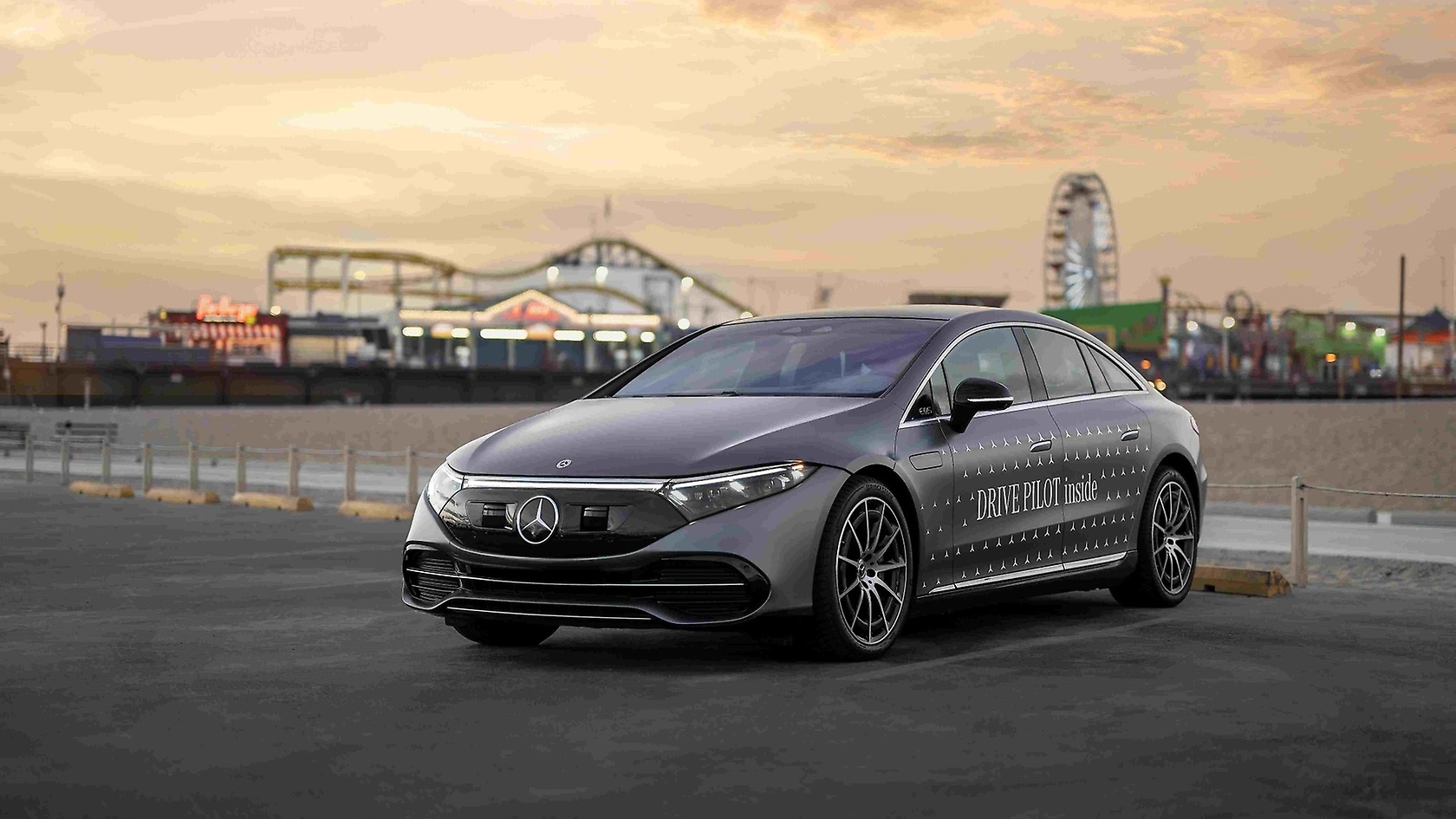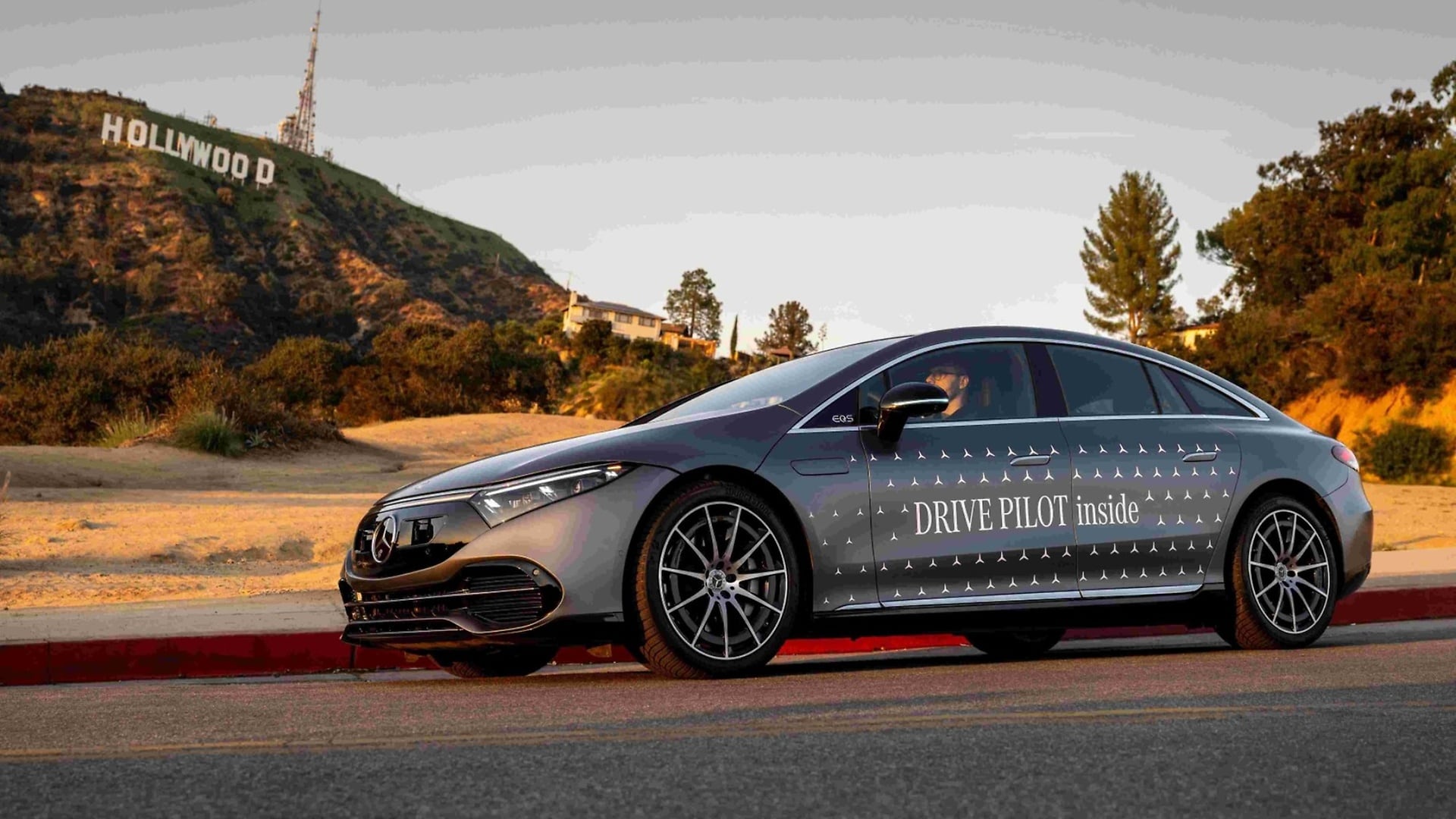DRIVE PILOT is an innovative technology that enables the vehicle to take over the dynamic driving task up to speeds of 40 mph on suitable freeway sections and during high traffic density. Once activated, DRIVE PILOT controls the speed and distance, effortlessly guiding the vehicle within its lane. During a conditionally automated journey, certain applications can be enabled on the vehicle's integrated central display that are otherwise blocked while driving
Safety remains central to this Mercedes-Benz innovation, which places high demands on operational reliability. DRIVE PILOT builds on the vehicle sensing technology of the Driver Assistance Package and includes additional sensors Mercedes-Benz considers indispensable for safe, conditionally automated driving. These include LiDAR, a camera in the rear window and microphones for detecting emergency vehicles, as well as a road wetness sensor in the wheel well. A vehicle equipped with DRIVE PILOT also has redundant steering and braking actuators and a redundant on-board electrical system to ensure maneuverability in the event one of these systems fails. These redundancies help to ensure a safe handover to the driver.
DRIVE PILOT will be installed on select EQS and S-Class models, and activated via the U.S. Mercedes me connect store starting at $2,500 (additional offer options will be announced at a later date). Given the advanced nature of the technology, this activation protocol ensures that customers are informed of the system’s capabilities at the time of Level 3 activation. Due to the continued advancement of software integration, a subscription-based offering also provides customers with the flexibility to choose options that are best suited for their individual needs. For example, if a customer moves to another state or area without access to Level 3 enabled freeways, they have the option not to renew the subscription.
,xPosition=0,yPosition=0.5)

,xPosition=0.5,yPosition=0)
,xPosition=0.5,yPosition=0)